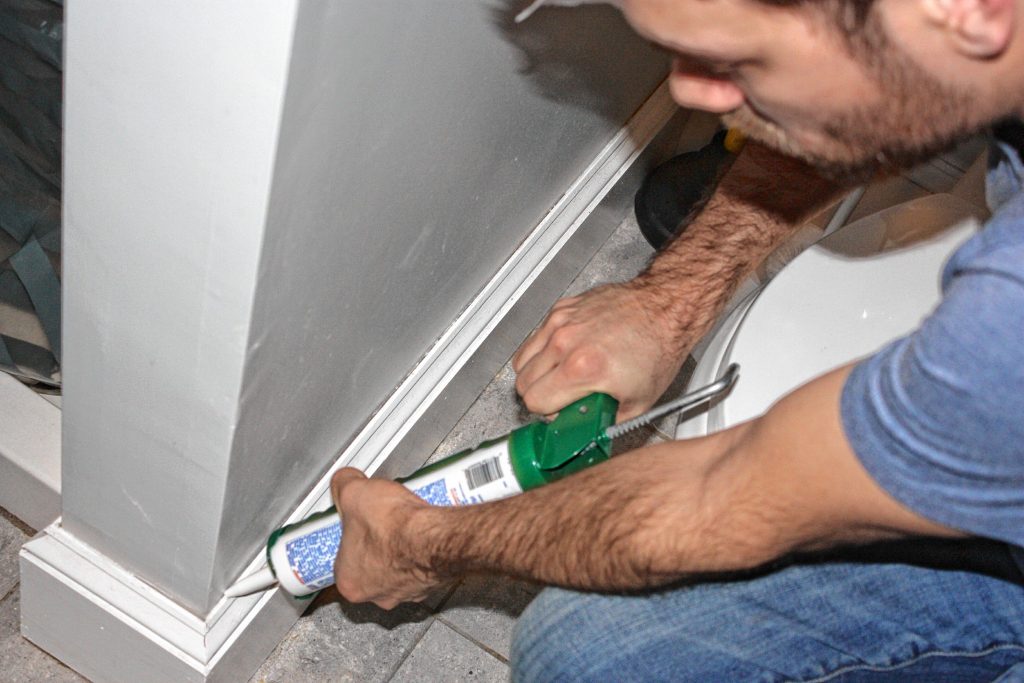“Little putty, little paint, make it look like what it ain’t.”
It’s a saying as old as time, and they’re words to live by if you want to make some improvements to your home by yourself. While spring is a popular time to spruce up the house, lots of projects can be pretty expensive if you hire a pro. But not every job requires the skills of a professional, even if you, the homeowner, don’t have much experience with that kind of work.
I, for one, happened to work in residential and commercial construction for about six years before starting my writing career, so I actually have some insider tips on some cheap and easy things almost anyone can do to improve their home. These tips might not add tens of thousands of dollars to your property value, but they’ll make a big difference to the folks who live in (and see the house’s little flaws) on a daily basis.
First, get some putty, a little tub of spackling, a tube of caulking and a caulking gun, if you don’t already have these things. Maybe grab a tube of waterproof silicone, too. These are all extremely cheap and widely available, and they can really do a lot to improve aesthetics.
If your baseboard is pulling away from the wall (and whose isnt?), hit the seam with a bead of caulking, seal it in by going over the bead with a finger, then wipe it clean with a damp cloth. In a matter of seconds, you will have made an unsightly gap disappear.
While you have the caulking gun out, pop in a tube of waterproof silicone and check your sinks, showers and bathtubs. Anywhere that sees moisture is bound to deteriorate over time, and the perimeter of your shower is a prime suspect. If the seal is crumbling or rotting away, remove it completely with a knife, make sure the surface is clean and dry, then run a bead of the silicone into the groove and repeat the process used to caulk the baseboard. This not only improves the look of these wet areas, but helps prevent serious water damage and mold/mildew buildup.
With the spackling compound, look for all the little holes your walls have accumulated over the years of putting up with posters, calendars, pictures and dings from moving furniture and things all over the place. All you need is a tiny bit of the spackling to fill the holes. In some cases you may need to smooth it out with a putty knife, but most pin- or nail-sized holes can be fixed with the ol’ index finger method. In the end you’ll be left with a little white dot instead of a little hole, but that can easily be touched up with a drop of paint.
If you have hardwood floors, get a little container of putty that matches the color and get comfy down on the floor. Look for little holes left by finish nails (most floors shouldn’t have too many of these, if the floor was installed correctly) and rub the putty in to seal those up. You can also do this to fill narrow gaps between floor boards, or fill nail holes in stair treads. If you have a squeaky board somewhere, you can hammer a small finish nail into it to make it more secure and eliminate the squeak, then just putty over the hole you made.
Assuming most people have at least a set of screwdrivers in the house, a good project is to just go around the house and tighten whatever screws may need it. Cabinet handles and knobs are always loosening up due to heavy use, and all you need to do is open the cabinet or drawer, grab the handle or knob to keep it from moving and turn the screw on the other side. Door knobs also tend to get wobbly over time, and most can be easily tightened with a regular old screwdriver (usually Phillips head).
These projects are all very simple, quick and cheap, and almost anyone can handle them all in a single day. While they may not completely transform your home into a royal palace, they’ll surely make the place look nicer and function better on a daily basis. And that will make things better for everyone who lives there.









